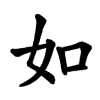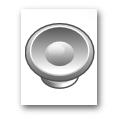Definify.com
Definition 2025
云
云
| ||||||
|---|---|---|---|---|---|---|
Translingual
| Stroke order | |||
|---|---|---|---|

| |||
Han character
云 (radical 7 二+2, 4 strokes, cangjie input 一一戈 (MMI), four-corner 10731, composition ⿱二厶)
Derived terms
References
- KangXi: page 86, character 8
- Dai Kanwa Jiten: character 254
- Dae Jaweon: page 178, character 1
- Hanyu Da Zidian: volume 1, page 384, character 2
- Unihan data for U+4E91
Chinese
Glyph origin
| Historical forms of the character 云
| ||
|---|---|---|
| Oracle bone script | Small seal script | |
 |
 |
|
| ||
|
References:
Mostly from Richard Sears' Chinese Etymology site (authorisation),
| ||
| Characters in the same phonetic series (云) (Zhengzhang, 2003) | |
|---|---|
| Old Chinese | |
| 魂 | *ɢuːn |
| 沄 | *ɢuːn, *ɢun |
| 忶 | *ɢuːn, *ɢuns |
| 囩 | *ɢun |
| 夽 | *ŋunʔ |
| 雲 | *ɢun |
| 芸 | *ɢun |
| 耘 | *ɢun |
| 妘 | *ɢun |
| 紜 | *ɢun |
| 云 | *ɢun |
| 耺 | *ɢun |
| 蕓 | *ɢun |
| 澐 | *ɢun |
| 橒 | *ɢun |
| 抎 | *ɢunʔ |
Pictogram (象形) , originally a stylized picture of clouds. The character was subsequently borrowed for a homophone meaning "to say", and the original meaning came to be represented by 雲 (OC *ɢun) through the addition of a semantic component 雨 (“rain”).
The simplified form adopted by the People's Republic of China in the 1950s eliminates this later addition and uses 云 for both "to say" and "cloud".
Etymology 1
| For pronunciation and definitions of 云 – see 雲 (“clouds”). (This character, 云, is the simplified form of 雲.) |
Notes:
|
Etymology 2
|
simp. and trad. |
云 | |
|---|---|---|
Pronunciation
- Mandarin
- Cantonese (Jyutping): wan4
- Hakka (Sixian, PFS): yùn
- Min Dong (BUC): ùng
- Min Nan (POJ): ûn / în
- Wu (Wiktionary): hhyn (T3)
- Mandarin
- (Standard Chinese, Beijing)+
- Pinyin:
- Zhuyin: ㄩㄣˊ
- Wade-Giles: yün2
- Gwoyeu Romatzyh: yun
- IPA (key): /yn³⁵/
-

- (Standard Chinese, Beijing)+
- Cantonese
- (Standard Cantonese, Guangzhou)+
- Jyutping: wan4
- Yale: wàhn
- Cantonese Pinyin: wan4
- IPA (key): /wɐn²¹/
- (Standard Cantonese, Guangzhou)+
- Hakka
- (Northern Sixian, incl. Miaoli)
- Pha̍k-fa-sṳ: yùn
- Hakka Romanization System: iunˇ
- Hagfa Pinyim: yun2
- IPA: /i̯un¹¹/
- (Southern Sixian, incl. Meinong)
- Pha̍k-fa-sṳ: yùn
- Hakka Romanization System: (r)iunˇ
- Hagfa Pinyim: yun2
- IPA: /(j)i̯un¹¹/
- (Northern Sixian, incl. Miaoli)
- Min Dong
- (Fuzhou)
- Bàng-uâ-cê: ùng
- IPA (key): /uŋ⁵³/
- (Fuzhou)
- Min Nan
- (Hokkien: Xiamen, Quanzhou, mainstream Taiwanese)
- Pe̍h-ōe-jī: ûn
- Tâi-lô: ûn
- Phofsit Daibuun: uun
- IPA (Xiamen): /un²⁴/
- IPA (Quanzhou): /un²⁴/
- IPA (Taipei): /un²⁴/
- IPA (Kaohsiung): /un²³/
- (Hokkien: Zhangzhou)
- Pe̍h-ōe-jī: în
- Tâi-lô: în
- Phofsit Daibuun: iin
- IPA (Zhangzhou): /in¹³/
- (Hokkien: Xiamen, Quanzhou, mainstream Taiwanese)
- Wu
- (Shanghainese)
- Wiktionary: hhyn (T3)
- IPA (key): /ɦʏɲ²³/
- (Shanghainese)
| Rime | |
|---|---|
| Character | 云 |
| Reading # | 1/1 |
| Initial (聲) | 云 (35) |
| Final (韻) | 文 (59) |
| Tone (調) | Level (Ø) |
| Openness (開合) | Closed |
| Division (等) | III |
| Fanqie | 王分切 |
| Reconstructions | |
| Zhengzhang Shangfang |
/ɦɨun/ |
| Pan Wuyun |
/ɦiun/ |
| Shao Rongfen |
/ɣiuən/ |
| Edwin Pulleyblank |
/ɦun/ |
| Li Rong |
/ɣiuən/ |
| Wang Li |
/ɣĭuən/ |
| Bernard Karlgren |
/i̯uən/ |
| Expected Mandarin Reflex |
yún |
| Baxter-Sagart system 1.1 (2014) | |
|---|---|
| Character | 云 |
| Reading # | 1/1 |
| Modern Beijing (Pinyin) |
yún |
| Middle Chinese |
‹ hjun › |
| Old Chinese |
/*[ɢ]ʷə[r]/ |
| English | say |
Notes for Old Chinese notations in the Baxter-Sagart system: * Parentheses "()" indicate uncertain presence; | |
| Zhengzhang system (2003) | |
|---|---|
| Character | 云 |
| Reading # | 1/1 |
| No. | 16363 |
| Phonetic component |
云 |
| Rime group |
文 |
| Rime subdivision |
2 |
| Corresponding MC rime |
雲 |
| Old Chinese |
/*ɢun/ |
Definitions
云
Compounds
|
|
|
Japanese
Kanji
(“Jinmeiyō” kanji used for names)
- This term needs a translation to English. Please help out and add a translation, then remove the text
{{rfdef}}.
Readings
Derived terms
- 云う (iu)
Korean
Hanja
云 • (un) (hangeul 운, revised un, McCune-Reischauer un)
- This term needs a translation to English. Please help out and add a translation, then remove the text
{{rfdef}}.
